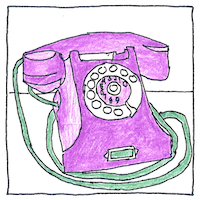Alexander Graham Bell
telecommunication

|
Telephone
Alexander Graham Bell realized variable electric resistance could be used in a device to transmit sounds clearly over a wire. Otherwise, Bell did not have the equipment or ability to make experimental devices so Bell relied on others particularly, Thomas A. Watson, whom he hired as his assistant.
Visible Speech
Bell had mastered his father’s system of phonetic notation used to train the deaf to speak. He taught deaf students, including the young Helen Keller, how to lip-read and speak wanting to help them fit into society. Concerned with providing a means of visualizing speech, Bell experimented with a phonautograph. Bell thought that it would be possible to generate an undulating electric current to correspond to sound waves, and that a set of tuned metal reeds could convert the waves back into recognizable sounds. At one point, Thomas A. Watson accidentally plucked a single reed. Hearing the overtones, Bell realized that a simpler device could transmit a voice.
On call
Reach out metaphorically and metaphorically touch someone. Consider it a necessity at work, at home, and on the street. Disembodied, a voice can seem unreal. A call is a demand often for money, always for time and attention. It can shock when the caller has tragic news. Yet the call could be a gift from one whom you love.



It’s ironic that Alexander Graham Bell invented the telephone, which is useless without hearing, because of his concern for helping the deaf. And it is pathetic that this device, which has saved lives and made fortunes, has tormented millions.
See also in The book of science:
Readings in wikipedia: